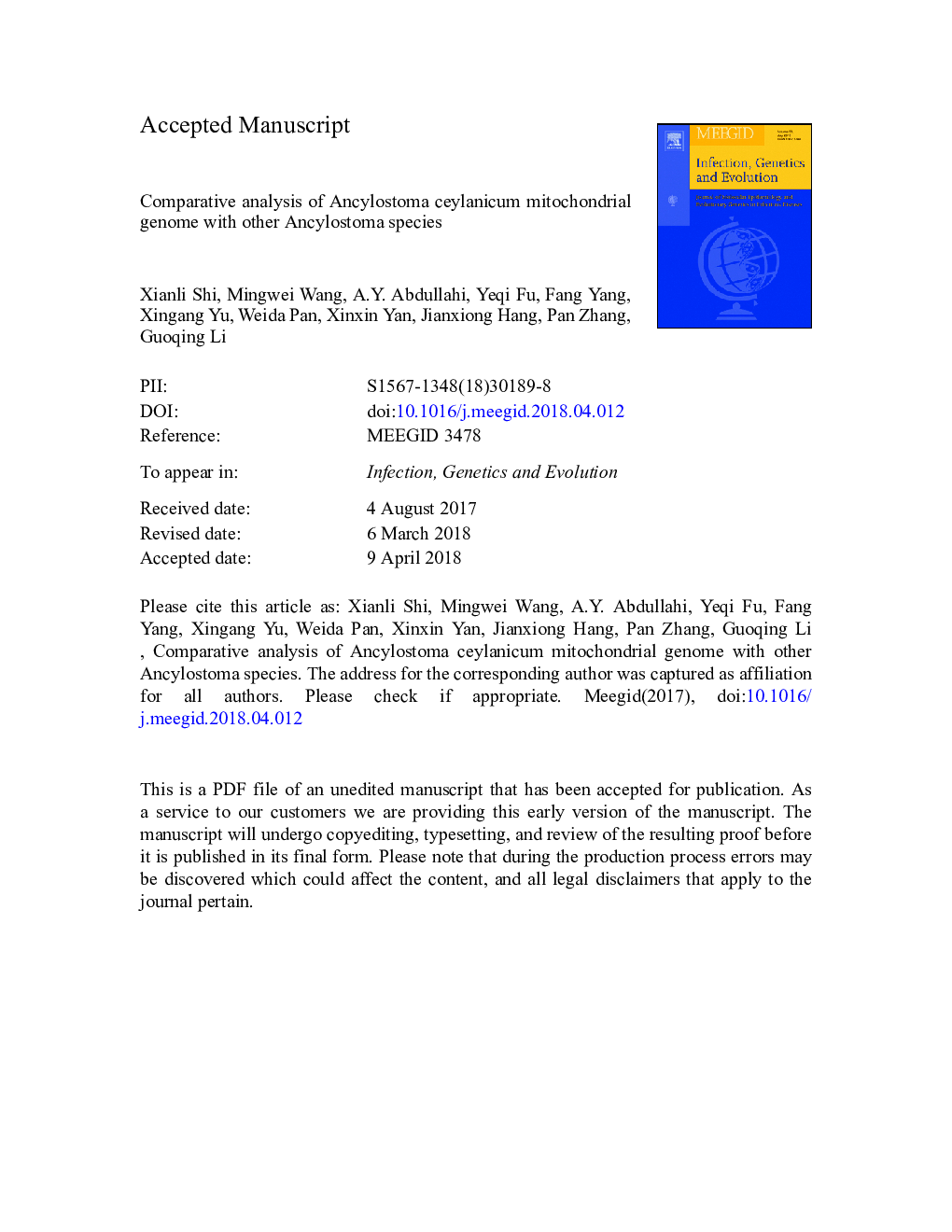| Article ID | Journal | Published Year | Pages | File Type |
|---|---|---|---|---|
| 8646725 | Infection, Genetics and Evolution | 2018 | 30 Pages |
Abstract
Ancylostoma ceylanicum may inhabit the small intestine of canids, felids and humans, can pose a potential risk to public health. This study is the first time to amplify complete mitochondrial genome sequence of A. ceylanicum from dog and to compare it with Ancylostoma tubaeforme, Ancylostoma duodenale and Ancylostoma caninum. The results showed that the complete mitochondrial genome of A. ceylanicum was 13,660â¯bp in length, including 12 protein-coding genes, 2 rRNA genes and 22 tRNA genes and 3 non-coding regions (AT-rich region, SNCR and LNCR). Its mtDNA was the shortest, biased toward A and T at base composition, and higher than other three Ancylostoma species at total AT content. Its nad5 and nad6 genes used TTG and ATT as initiation codons, while other three Ancylostoma species used ATT and GTG or ATG. The 22 tRNA genes were different in length among four Ancylostoma species, but their anticodons were the same. Among 12 protein-coding genes, the cox1 gene was the lowest at AT content and minimum at Ka/Ks while the nad2 gene was the opposite. The phylogenetic tree showed that in the lineage of Ancylostoma, A. ceylanicum occurred on a branch external to other three Ancylostoma species, and A. caninum and A. tubaeforme had closer phylogenetic relationship than A. duodenale. This study not only enhances the mitochondrial genome database of Ancylostomatidae nematodes, but also provides new data for further phylogenetic studies among Ancylostomatidae nematodes.
Related Topics
Life Sciences
Agricultural and Biological Sciences
Ecology, Evolution, Behavior and Systematics
Authors
Xianli Shi, Mingwei Wang, A.Y. Abdullahi, Yeqi Fu, Fang Yang, Xingang Yu, Weida Pan, Xinxin Yan, Jianxiong Hang, Pan Zhang, Guoqing Li,
